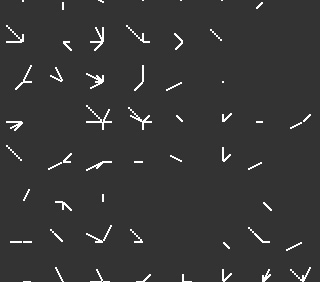Splash art originated in the 1940s in comics, where the term referred to a full page of visuals at the front of a book. Pages were designed to engage the reader's imagination along the lines of the comic's broader concept, while standing independent from the narrative. In the late 1990s, when the widespread use of the application Flash opened up new possibilities for animation and interactive media, the idea of the splash page migrated to web design. Online splash art brought visual excitement to a webpage when low modem speeds made it impractical to post large or moving images amid a site's textual content.
Rhizome introduced splash pages to its web site in 1998 in order to display artwork with greater immediacy....
Rhizome introduced splash pages to its web site in 1998 in order to display artwork with greater immediacy....
Launch Project 
 X, 2001
X, 2001
About
A gray screen gradually fills with white scratches in an animation that can be interrupted at any time, folding as soon as the viewer clicks. Andrew Childs' splash page generates variations on Rhizome's logo, with horizontal roots spreading in all directions. The work is attributed to megatight, the handle under which Childs created conceptual design around 2000, but he no longer owns the domain name. Childs works at Glomerate, a Brooklyn design studio.
http://www.andrewchilds.com/plot/
http://www.andrewchilds.com/plot/